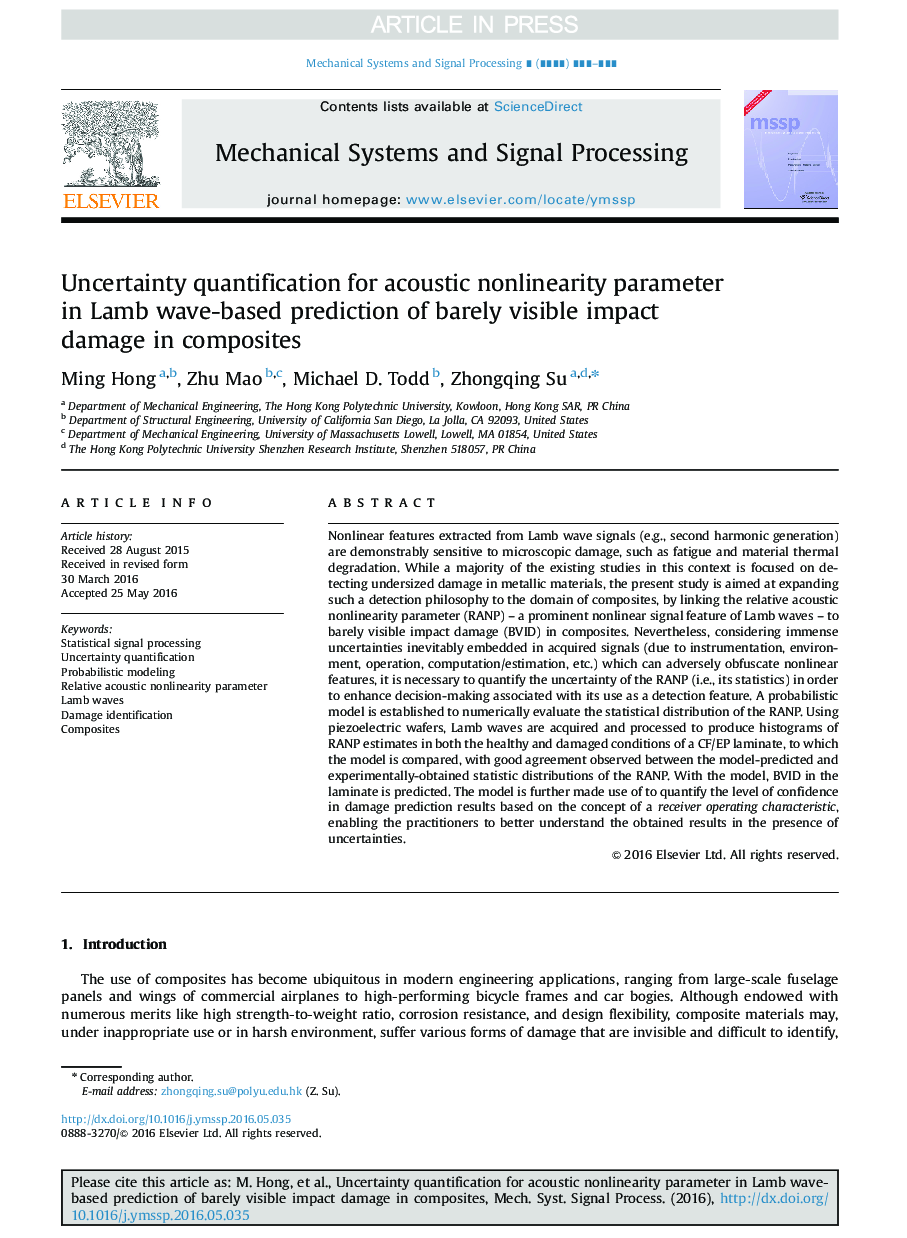| Article ID | Journal | Published Year | Pages | File Type |
|---|---|---|---|---|
| 4977270 | Mechanical Systems and Signal Processing | 2017 | 13 Pages |
Abstract
Nonlinear features extracted from Lamb wave signals (e.g., second harmonic generation) are demonstrably sensitive to microscopic damage, such as fatigue and material thermal degradation. While a majority of the existing studies in this context is focused on detecting undersized damage in metallic materials, the present study is aimed at expanding such a detection philosophy to the domain of composites, by linking the relative acoustic nonlinearity parameter (RANP) - a prominent nonlinear signal feature of Lamb waves - to barely visible impact damage (BVID) in composites. Nevertheless, considering immense uncertainties inevitably embedded in acquired signals (due to instrumentation, environment, operation, computation/estimation, etc.) which can adversely obfuscate nonlinear features, it is necessary to quantify the uncertainty of the RANP (i.e., its statistics) in order to enhance decision-making associated with its use as a detection feature. A probabilistic model is established to numerically evaluate the statistical distribution of the RANP. Using piezoelectric wafers, Lamb waves are acquired and processed to produce histograms of RANP estimates in both the healthy and damaged conditions of a CF/EP laminate, to which the model is compared, with good agreement observed between the model-predicted and experimentally-obtained statistic distributions of the RANP. With the model, BVID in the laminate is predicted. The model is further made use of to quantify the level of confidence in damage prediction results based on the concept of a receiver operating characteristic, enabling the practitioners to better understand the obtained results in the presence of uncertainties.
Keywords
Related Topics
Physical Sciences and Engineering
Computer Science
Signal Processing
Authors
Ming Hong, Zhu Mao, Michael D. Todd, Zhongqing Su,
